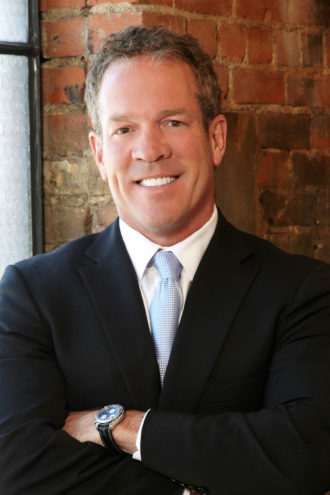With so many commercial construction projects underway and in the pipeline for developers, owners, and general contractors throughout North Texas, it comes as no surprise that all of us are talking about Section 232: Tariffs on Aluminum and Steel, made effective in March by President Trump.
While Trump explains that he is doing this in the interest of national security, some believe he is fulfilling a campaign promise without assessing the impact on other economic drivers, such as the construction industry.
Still, according to the World Steel Association, China now produces almost half of the world’s steel at 49.2 percent production while the U.S. share of global production has dropped to 4.8 percent. And it is true that there is only one mill remaining in the U.S. that produces aircraft grade aluminum.
No doubt a 10 percent tariff on foreign aluminum and a 25 percent tariff on foreign steel, which excludes Canada and Mexico until June, has significant ramifications on current and future construction projects. In the U.S., the mini-mills and mega-mills are running at full capacity. There is talk about building new plants but, realistically, that can take about six years to complete.
Already, steel prices are escalating every 10 days, according to one of my suppliers, to the tune of about 2 to 3 cents per pound each time. For most general contractors, that has translated into price increases in April of 15 percent and, in May or June, another 10 percent.
One of the largest manufacturers of steel framing and metal lathe systems in the U.S. has announced that it is issuing new price sheets along with budgetary escalation schedules every month going forward. Already several regional plants have temporarily suspended future quoting for the Texas market, due to the surge in the volume of job quotes from the effects of Section 232 and the tightening supply. They need to see where steel costs are going, and it is hard to protect job quotes when the future is uncertain.
I get that.
Adding Tariff Contingencies
In a recent article on tariffs in the National Real Estate Investor, one real estate partner in an LA law firm, who has been working on a 500,000-square-foot high rise office, received a recent notice from the general contractor stating that the project couldn’t be built on a fixed price and required that a “steel tariff contingency” be added to the contract. So how does that impact underwriting and deal flow when construction costs are in flux and uncertainty prevails?
Every project type from industrial warehouses to multi-family apartments, commercial office buildings to hospitals and retail centers are affected because steel frames the buildings and reinforcing steel is inside concrete.
Our structural steel pricing on a $20 million project that we’ve been working on for the past eight months has increased 15 percent. Whether or not that job moves forward is still in question, and not just due to steel pricing.
For now, we have disclaimers in all of our proposals that pricing is good for 10 days, and that we are not responsible for price increases on steel. Suppliers won’t lock in pricing which means steel will be spot-quoted going forward.
It’s Not Just Tariffs
I reached out to several of our construction partners, and many said that steel tariffs, albeit causing uncertainty, were not the only concerns they had about costs impacting construction.
According to these suppliers, concrete, sheetrock, aluminum, and fiber have all risen due to demand and shortages. One figure surprised me, too, and that was fire protection systems which have increased 30 percent since January.
Add to these material costs, the continuing tight labor market and projected labor shortages, and you have the ingredients for expediting or delaying future projects. Much depends upon where the markets go.
More than anything, instability and uncertainty foster delays and influence price increases. Will these settle down? Most of my peers think so, as do I. Eventually, pricing will level off, and we anticipate that by the end of the year, the cost of steel will have stabilized, if not declined.
Staying the course
Everyone in our industry knows this momentum can’t go on forever. Interest rates have started to rise, affecting financing decisions. Commodities price increases can impact new development decisions.
Right now, our pipeline is full. Our backlog is established. New projects are still coming up, and businesses throughout Dallas-Fort Worth are thriving.
For those in commercial real estate, development, and construction, the outlook is still quite healthy. Although costs may continue to escalate, there are plenty of projects being built.
The same dynamics are in the workforce. Labor costs are rising but employment figures are at historic highs for the region.
We are very optimistic that North Texas will continue to experience growth and opportunity for the next several years.
Charles R. Myers is President and CEO of MYCON General Contractors and a former co-chair of the Industrial and Office Local Product Council for the North Texas District Council of the ULI. Myers serves on Landmark Bank’s Texas Regional Board as a Director. He can be reached at [email protected].





